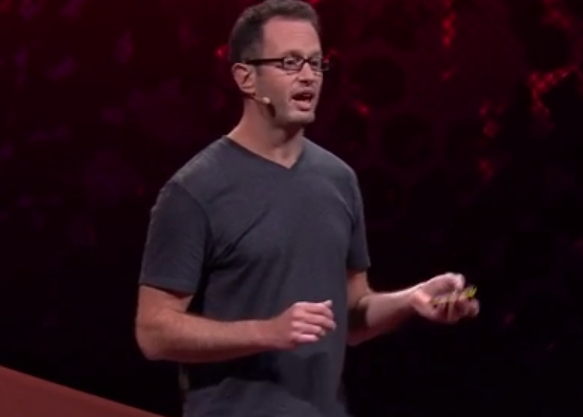This ability to make copies of DNA, as simple as it sounds, has transformed our world.
DNA的这种复制能力听起来很简单,却改变了我们的世界。
Scientists use it every day to detect and address disease, to create innovative medicines,
科学家们每天都用它来检测和对付疾病,创造新药品,
to modify foods, to assess whether our food is safe to eat or whether it's contaminated with deadly bacteria.
改进食品,评估我们的食物是否安全,又或者是否被致命的细菌污染。
Even judges use the output of these machines in court to decide whether someone is innocent or guilty based on DNA evidence.
甚至法官在法庭上也使用这些机器输出的结果,在DNA证据的基础上来判定某人是无辜或有罪。
The inventor of this DNA-copying technique was awarded the Nobel Prize in Chemistry in 1993.
DNA复制技术的发明者在1993年被授予诺贝尔化学奖。
But for 30 years, the power of genetic analysis has been confined to the ivory tower, or bigwig PhD scientist work.
但过了30年,遗传分析的力量一直局限于象牙塔,或是有重大影响力的博士科学家的工作之中。

Well, several companies around the world are working on making this same technology accessible to everyday people like the pig farmer, like you.
世界各地的数家公司正在把同样的技术简易化,方便人们在日常生活中使用,例如养猪农户以及我们大家。
I cofounded one of these companies.
我与其他人共同成立了其中一家这样的公司。
Three years ago, together with a fellow biologist and friend of mine, Zeke Alvarez Saavedra,
在3年前,和我的一位生物学家朋友Zeke Alvarez Saavedra一起,
we decided to make personal DNA machines that anyone could use.
我们决定让个人化DNA检测器能被每个人所使用。
Our goal was to bring DNA science to more people in new places.
我们的目标是在新的地方将DNA科学带给更多的人。
We started working in our basements. We had a simple question:
我们在地下室开始工作。我们有一个简单的问题:
What could the world look like if everyone could analyze DNA?
如果每个人都能分析DNA,世界可能是什么样子的呢?
We were curious, as curious as you would have been if I had shown you this picture in 1980.
我们很好奇,就像你们好奇我如果在1980年向你们展示这张照片。



